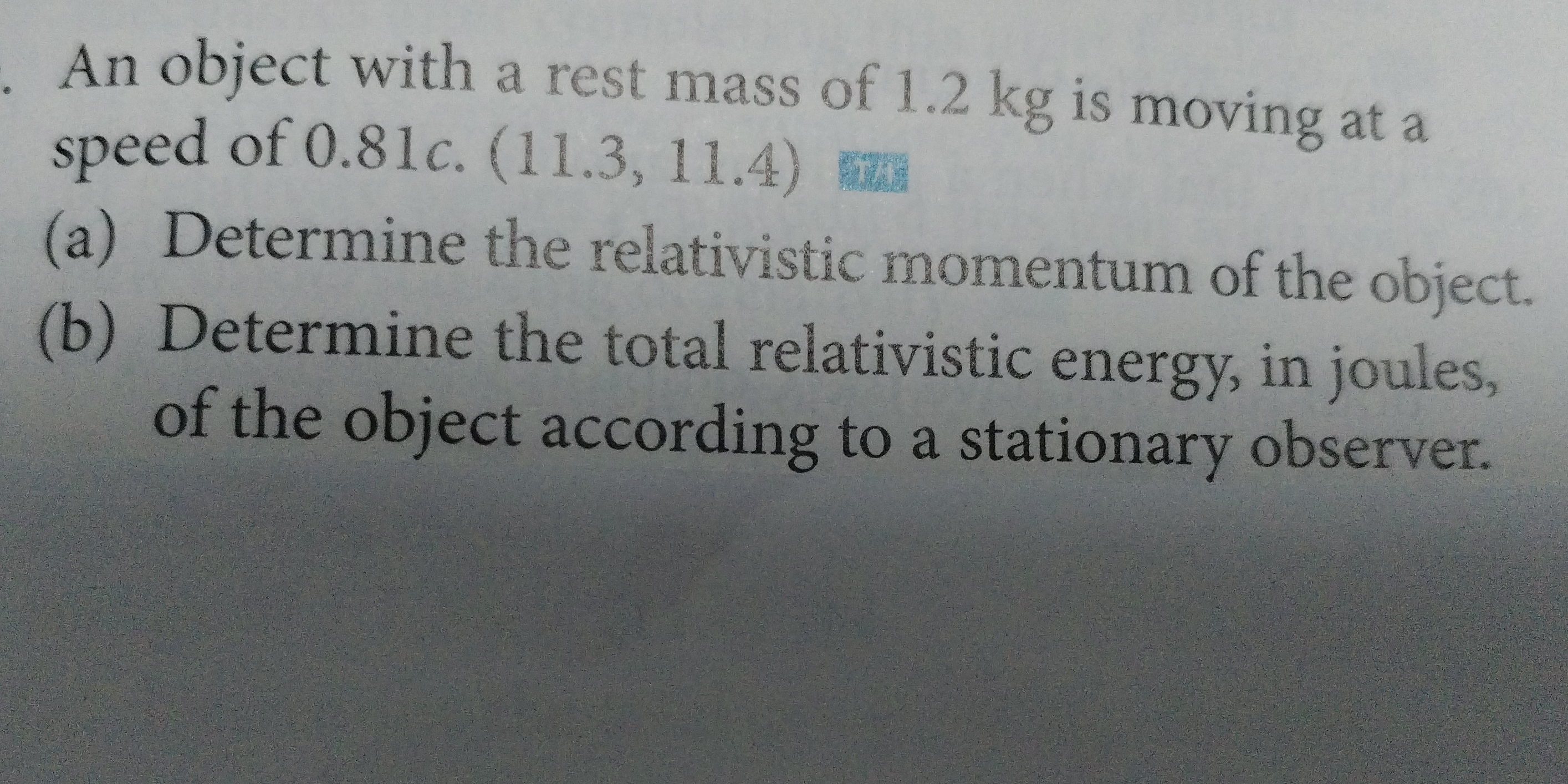An object with a rest mass of 1.2 kg is moving at a speed of 0.81c. (a) Determine the relativistic momentum of the object. (b) Determine the total relativistic energy, in joules, o... An object with a rest mass of 1.2 kg is moving at a speed of 0.81c. (a) Determine the relativistic momentum of the object. (b) Determine the total relativistic energy, in joules, of the object according to a stationary observer.

Understand the Problem
The question is asking us to calculate two distinct properties of an object with a known rest mass and speed: (a) its relativistic momentum and (b) its total relativistic energy according to a stationary observer. The calculations will involve concepts from relativity.
Answer
(a) \( p \approx 0.89 \, \text{kg}\cdot\text{m/s} \) (b) \( E \approx 11.5 \, \text{J} \)
Answer for screen readers
(a) The relativistic momentum ( p \approx 0.89 , \text{kg}\cdot\text{m/s} )
(b) The total relativistic energy ( E \approx 11.5 , \text{J} )
Steps to Solve
- Calculate the Lorentz Factor To find the relativistic momentum and energy, we first need the Lorentz factor $\gamma$, which is given by:
$$ \gamma = \frac{1}{\sqrt{1 - \left(\frac{v}{c}\right)^2}} $$
Where:
- $v = 0.81c$
- $c$ is the speed of light.
Calculating $\gamma$:
$$ \gamma = \frac{1}{\sqrt{1 - (0.81)^2}} $$
- Calculate the Relativistic Momentum The formula for relativistic momentum is:
$$ p = \gamma mv $$
Where:
- $m = 1.2 , \text{kg}$ (rest mass)
- $v = 0.81c$
Substituting the values into the momentum equation gives:
$$ p = \gamma \cdot 1.2 \cdot 0.81c $$
- Calculate the Total Relativistic Energy The total relativistic energy is given by the equation:
$$ E = \gamma mc^2 $$
Substituting the values into the energy equation:
$$ E = \gamma \cdot 1.2 \cdot c^2 $$
- Final Calculations Now, calculate the values of $\gamma$, $p$, and $E$ using the equations derived above.
(a) The relativistic momentum ( p \approx 0.89 , \text{kg}\cdot\text{m/s} )
(b) The total relativistic energy ( E \approx 11.5 , \text{J} )
More Information
The relativistic momentum accounts for the effects of high speeds approaching the speed of light, which significantly alters the motion of massive objects. The total energy includes both rest mass energy and kinetic energy, illustrating the profound effects of relativity in physics.
Tips
- Forgetting to calculate the Lorentz factor $\gamma$ correctly can lead to incorrect momentum and energy values.
- Confusing relativistic momentum with classical momentum; always update calculations to consider relativistic effects.
AI-generated content may contain errors. Please verify critical information